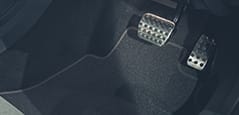Bicycle Puncture Repair Guide

Cycling is a great form of exercise and a great way to travel, but a puncture can quickly bring your journey to a halt. Whether you’re commuting to work, on a cross-country adventure or just on a bike ride with the family, knowing how to repair a puncture is essential. In this guide, we’ll cover everything you need to keep you going on your journey. Being prepared can make all the difference.
Bicycle Tyres & Common Issues
It’s important to understand your bicycle tyres to ensure you make the right repairs.
There are three different types of tyres:
- Clincher – These are the most common tyres, these tyres hook to both sides of the rim using a bead. In Clincher tyres, an inner tube is added into the tyre and is inflated. To repair a puncture for this tyre, you can remove the inner tube to replace or repair.
- Tubular – In Tubular tyres the tyre and the inner tube are sewn together and glued to the rim. Tubular tyres aren’t easily repaired and they’re mainly used for racing.
- Tubeless – As the name states, these tyres don’t have an inner tube, Tubeless tyres form an airtight seal with the wheel. You can add sealant to the tyre to increase puncture resistance to the tyre, but this won’t make the tyre completely puncture-proof.
Most issues that cyclists will come across are punctures, sidewall tears, worn-out treads and pinch flats. Preventing these issues requires regular maintenance, proper inflation and tyre liners.

Fixing A Bicycle Puncture
Step One
Check the tyre externally for sharp objects or obvious damages.
Step Two
Remove the wheel and tyre to check the inner tube for air leaks.
Step Three
Locate the puncture and mark it.
Step Four
Use your puncture repair kit or replace the inner tube.
Step Five
Reassemble your bike and inflate the tyre.
Wherever you’re cycling, it’s essential to have the right repair kit for your bike. Here at the RAC Shop, we have you covered with Rema Tip Top’s Puncture Repair Kits:
- Rema Tip Top Puncture Repair Kit.
- Rema Tip Top TT09 E-Bike Puncture Repair Kit.
- Rema Tip Top TT02 Bike Puncture Repair Kit.
- Rema Tip Top TT05 Mountain Bike Puncture Repair Kit.
- Rema Tip Top Tubeless Repair Kit.
As well as a repair kit, it’s best to plan your route accordingly, taking into consideration terrain, rest stops and potential backup routes. Having a power bank is always handy, especially if you get lost and you need your phone.
Make sure you keep safe on your journey, wear a helmet, use your lights and follow road regulations.




